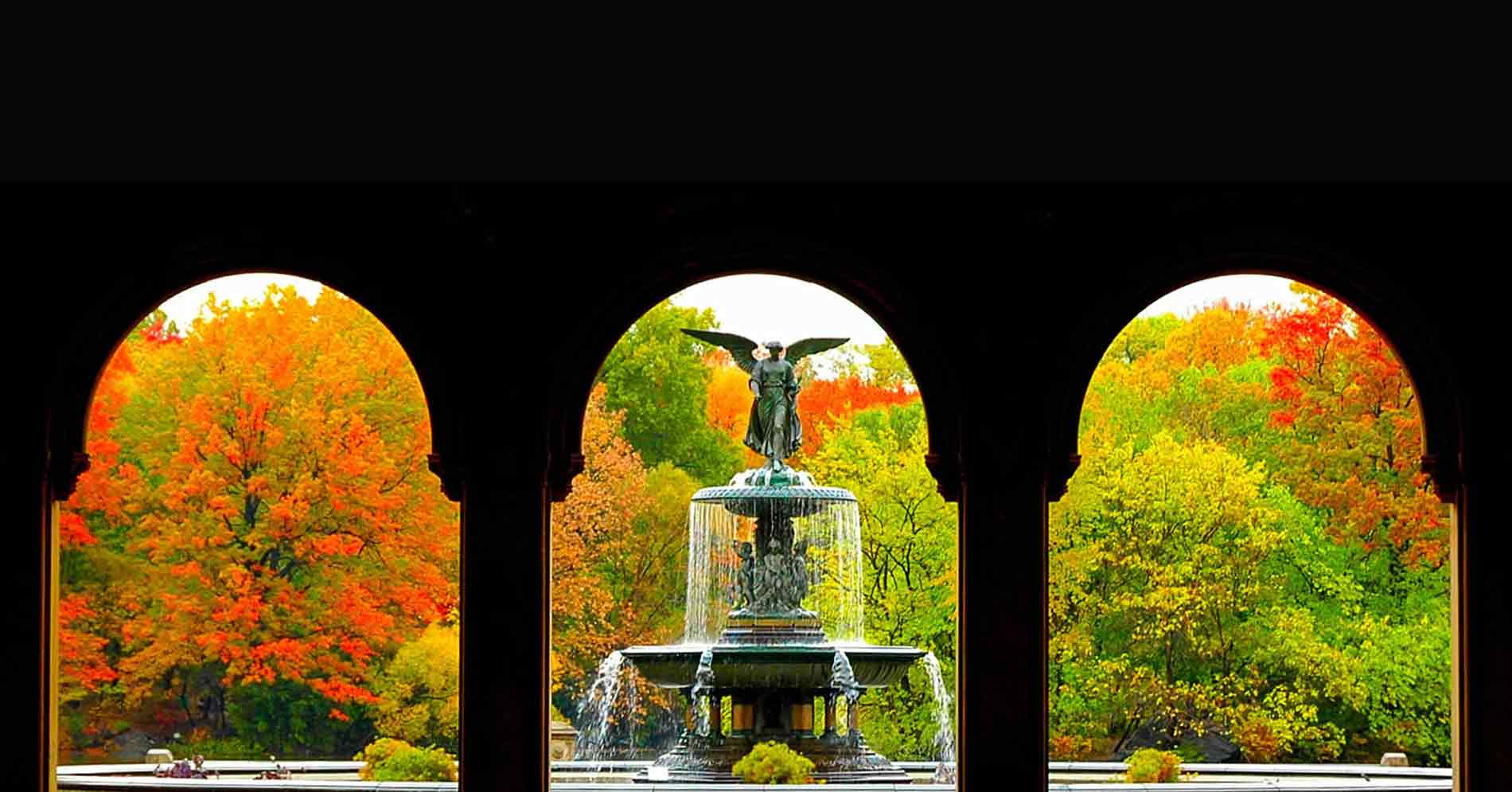Nestled at the crossroads of Central Park’s most scenic landscapes, Bethesda Terrace stands as a testament to visionary design, artistic collaboration, and the enduring power of public space. More than just an architectural marvel, the Terrace is the symbolic and social heart of Central Park- a place where nature, art, and community converge in spectacular fashion.
A Vision for the People
The story of Bethesda Terrace begins with the ambitious vision of Frederick Law Olmsted and Calvert Vaux, the masterminds behind Central Park’s celebrated “Greensward Plan.” Their goal was revolutionary: create a park that offered city dwellers a restorative escape into nature, while also providing spaces for social interaction and cultural enrichment. Olmsted, a pioneer in landscape architecture, believed in the transformative power of green spaces for public health and social well-being. Vaux, the British-born architect, brought a keen sense of structure and artistry to the project, ensuring that architectural elements complemented the park’s naturalistic beauty.
Bethesda Terrace was conceived as the park’s main gathering place, where visitors from all walks of life could mingle, relax, and enjoy the restorative qualities of their surroundings. The Terrace’s strategic placement at the end of the Mall, Central Park’s only straight promenade, was designed to be the culmination of the park’s primary formal space.
Design: Nature First, Architecture Second
Construction of Bethesda Terrace began in 1859, making it one of the park’s earliest and most significant structures. The Terrace is a two-level complex: the upper level, flanked by 72nd Street, offers sweeping views of the Lake and the Ramble in the background, while the lower plaza, known as the Esplanade, centers on the iconic Bethesda Fountain.
The design is a masterclass in blending architecture and nature. Vaux insisted that the built elements should be “subordinate to the surrounding landscape,” a philosophy that shines through in every detail. The materials, such as New Brunswick sandstone, Roman brick, and granite, were chosen for their earthy hues and durability. The two grand staircases, along with a smaller one leading directly to the Mall, connect the levels in a way that feels both monumental and inviting.
Artistry in Stone and Tile: The Role of Jacob Wrey Mould
While Olmsted and Vaux established the vision, it was Jacob Wrey Mould who brought the Terrace’s decorative elements to life. Mould, an English-born architect and designer, infused the space with intricate carvings and vibrant colors. The balustrades feature sculpted motifs representing the four seasons, such as lambs for spring, butterflies and berries for summer, holly and pine cones for fall, and firewood for winter. These are alongside whimsical touches like ice skates and even a witch on a broomstick.
Perhaps the most breathtaking feature is the arcade’s ceiling, adorned with around 16,000 elaborate Minton encaustic tiles. This polychrome masterpiece is the only place in the world where these tiles are used on a ceiling and outdoors, creating a kaleidoscope of color and pattern that dazzles the visitor as they pass through the cool, echoing hall. Mould’s work here is considered his crowning achievement, marrying Victorian and Moorish exuberance with themes of nature, art, and science.
Highlights and Enduring Appeal
Bethesda Terrace is not just an architectural gem, it is a living, breathing stage for New York life. The site offers panoramic views, which attract artists and performers, and is a favorite backdrop for so many movies. The Angel of the Waters statue atop Bethesda Fountain, designed by Emma Stebbins and dedicated in 1873, adds a spiritual dimension, symbolizing healing power of water.
Today, whether you’re seeking a quiet moment by the Lake, a lively crowd to observe, or a glimpse into New York’s rich cultural tapestry, Bethesda Terrace delivers. It is Olmsted and Vaux’s vision realized: a place where nature and humanity meet, and where every visitor becomes part of the park’s unfolding story.
Find the Central Park Experience and other New York Historical tours at Revolutionary Tours NYC










